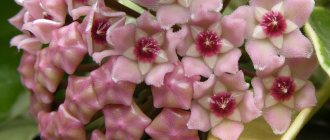Primrose is also called primrose. This is not one flower, but a large group, which, according to various sources, includes 500 or 600 varieties. Delicate, beautiful flowers grow both in the wild and in gardens, apartments, and offices.
Perennial plants have long gained popularity among gardeners. One of the most favorite varieties of florists is Primula acaulis mix.
Description of the plant
Primrose is common on all continents, but most of its varieties grow in Asian countries: China, Korea, Japan. In Russia, this plant is also known as primrose.
Primula acaulis is short-stemmed. It is also sometimes called stemless because of its small size: the height reaches only 20 cm. The plant forms a rosette at the very root: leaves grow from it, covered with small thin hairs. They have an elongated shape and are bright green in color.
Primrose blooms in spring and continues until mid-summer. At the same time, peduncles are formed from the rosette, on which five-membered flowers of regular shape bloom. Their size ranges from 25-40 mm. In the second half of July, fruit boxes begin to form.
Attention!
It is impossible to guess the color of the petals of primrose acaulis mix in advance, since the seeds of plants with different flower colors are mixed in the bag. It comes in white, blue with a purple tint, and bright yellow, as in the photo below.
How to care for indoor primrose
Bright primrose is one of the most popular annual and perennial herbaceous potted spring primroses.
The general name of the genus comes from the Latin word “primus”, i.e. early, first, indicating earlier flowering of the crop. Its homeland is North America and Asia, distributed in the mountains of Crimea and the Caucasus, in European countries with a temperate climate.
There are about 500 members of the genus, but only a few species of Asian origin are grown as houseplants. Through the efforts of breeders, a wide variety of fairly hardy varieties and hybrids have been developed, which are distinguished by a huge variety of colors.
Long oval leaves, collected in a rosette, frame a bouquet of bright large flowers in all shades of the rainbow: yellow, orange, brown, pink, purple, blue or white. The height of the bush is no more than 25-30 cm.
As a rule, at home the plant is considered as an annual, but if you provide the indoor primrose with proper care, you can thereby prolong not only the flowering, but also the life of this magnificent primrose.
Selection of location and conditions of detention
Primula acaulis is not a very whimsical indoor plant. But for long-term and lush flowering, you should still adhere to some rules for maintaining and caring for the flower.
Lighting and location
Primrose does not like bright light. It should be muted. It is best to place it on a window facing west or east. If you choose between a northern and southern location, you should give preference to the northern one. If your windows only face south, provide the plant with shade or place the pot at the back of the room.
The bowl with primrose can be taken out onto the balcony or into the garden: the flower is not afraid of open air. Primrose also does not need additional lighting if the pot is positioned correctly.
Temperature
Primrose prefers to live in moderately cool conditions. The ideal temperature for it is +12…+15 °C. If it is higher, then flowering ends faster. In order for the primrose to produce flower stalks annually, during the dormant period the plant must be kept in a room in which the air temperature never rises above +14 °C.
Air and humidity
Primrose loves moist air, so it responds well to spraying the leaves with water that has been standing for 24 hours. It is also useful to place a flower pot on wet stones. Then the air around it will always be moist.
Important!
You should not wipe the leaves of the primrose, as this may cause damage to their hairs.
Primrose feels good in drafts and open air. However, it does not tolerate warm and dry air currents emanating upward from radiators.
Soil and pot
The soil for indoor primrose should be light, fertile and loose. These requirements are met by universal soil, which can be purchased at a florist store. You can also make your own soil mixture. To do this, mix:
- leaf soil (1 part);
- high peat (1 part);
- washed river (1 part).
The container for primrose should be wide. The diameter of the pot should be 100-150% of its height. Plastic and clay bowls are suitable for growing primrose at home.
Popular types
Primula acaulis or common (Primula acaulis) is a hybrid and is most often cultivated in open ground, but there are several spectacular indoor miniature varietal forms. Flowering is very long.
The main disadvantage of the species is its high sensitivity to higher temperatures - the bush quickly withers. Famous varieties of acaulis: “Harlequin bicolor” with especially large flowers, “Jackpot”, apricot “Sphinx Apricot”, “Belarina series”, whose burgundy flowers look like roses, red-orange “Notso Prim”.
The perennial primrose or obconica (Primula obconica) comes from China. The most common indoor type of primrose.
Flowers up to 8 cm in diameter can be white, red or all shades of pink and purple with a characteristic greenish eye in the middle, collected in a lush bouquet.
Primula obconica is so popular in Germany that it is called the "German Spring Rose". Its flowering is very long and often repeated. One of the most popular varieties is “Twilly Touch Me”.
One- or two-year-old soft-leaved or mallow-like primrose (Primula malacoides) . This species is perhaps the most interesting and most beautiful, due to the incredibly large number of spectacular fragrant flowers collected in a whorled inflorescence.
Numerous flowers open gradually, decorating the plant for 3 or more months. Some of the many varieties: 'Mars', 'Snow Queen', 'Beauty Mix' with double flowers, 'White Pearl', pink 'Fair Lady'.
Care
Primrose needs special care. If you do not care for it correctly, it may refuse to form flower stalks.
Watering
Primrose needs regular but moderate watering. To do this, use water that has stood at room temperature. Once a month, spray the primrose leaves with soft water.
It’s time to moisten the soil when the bush and leaves begin to droop. In spring and summer, it is advisable to prevent the development of these signs, as the plant may finish flowering earlier. In winter, water only after the earthen ball has completely dried out.
Top dressing
Primula acaulis needs regular feeding. They are combined with watering 2 times a month. Primroses are fertilized only during the period of active growth and flowering. Each year, start feeding the plant in February and stop doing it in October.
The best choice is organomineral fertilizers for indoor plants (Prompter, Kemira). But primrose does not need a large amount of organic matter and minerals. Therefore, it is necessary to dilute the fertilizer by reducing its dosage by 2 times.
Loosening, mulching
Primrose loves loose and oxygenated soil. Therefore, it is recommended to loosen the soil after each watering. To avoid loosening it so often, you can mulch it. This is done using decorative mulch, which can be purchased at a flower shop. But since primrose forms a powerful rosette with leaves, you can also use gravel, sawdust or seed husks: they will be almost invisible.
Pinching, pinching, pruning
Short-stemmed primrose does not require the formation of a bush: it is already very compact.
Transfer
Young primrose rosettes are replanted every year, and adult specimens - at least once every 3 years. To repot a plant:
- Prepare a bowl so that the roots of the primrose acaulis fit into it, and there is still at least 2-3 cm left to the walls.
- Place drainage at the bottom of the pot. Expanded clay, gravel or crushed red brick are suitable for this.
- Place a small layer of soil on top.
- Remove the primrose from the old pot and carefully examine the roots. If any of them are sick, remove them. Treat all areas of damage and cuts with wood ash or crushed activated carbon. If the root system has been affected by rot, it is advisable to soak it for 2 hours in a 0.2% Fundazol solution before planting.
- Place the primrose in a new bowl, straighten the roots and fill the free space with soil.
- Moisten the soil and place the flower pot in a permanent place.
Advice! To easily remove an earthen lump from an old pot, you need to stop watering 1 week before replanting the plant.
The best time for transplantation is September. Sometimes gardeners recommend replanting primrose acaulis immediately after flowering. If the flower is sick and needs an urgent change of pot, then there are no time limits. But still, it is undesirable to touch the plant during flowering or during the dormant period: it will take root worse.
How to care for indoor primrose after purchase
Temperature
Primroses appear in March and early April, when the air is still cool and the soil is saturated with moisture, so the key factors in growing indoor primrose are temperature and humidity.
The optimal temperature regime, which prolongs flowering for a long time, is 10-16 ̊C, and in winter during the dormant period it can be lowered to 7-10 ̊C. In a warm room, leaves and flowers quickly wither.
Cool conditions can be created by placing the pot on an insulated balcony. A plate of crushed ice placed close to the plant lowers the temperature well. Primrose loves fresh air, so it is advisable to take the pot out onto the balcony or terrace in mid-April.
Primrose needs increased air and soil humidity during budding and flowering. Watering is usually carried out 2 times a week, when the top layer of soil has dried by 1 cm. The soil should be moderately moist at all times, but not wet. The bush reacts to a lack and excess of moisture with drooping foliage.
When watering, avoid getting moisture into the center of the leaf rosette, as this can lead to the development of rot, and pour out excess water from the pan. For the procedure, cool but soft water is used. The ideal option would be rain. In winter, during the dormant period, watering is reduced.
You can increase air humidity by using a container filled with water with expanded clay and moss or by spraying water near the flower.
The best place for primrose at home is in bright, diffused light. Direct rays cause burns and wilting of foliage and shorten the flowering period. The optimal placement option would be east or west windows.
Caring for indoor primrose after purchase also involves timely removal of faded flowers, otherwise a fungal infection may develop.
Feed with liquid complex fertilizer for flowering indoor plants during flowering and budding once every two weeks, using half the dose recommended on the package.
How to transplant
Perennial primroses are replanted once a year in September. Choose a wide and shallow pot, as the roots of the plant are short.
A drainage layer of expanded clay is laid on the bottom, and the soil is prepared from garden soil for indoor plants with the addition of 2 parts peat and one part sand. When replanting, carefully remove the plant from the pot so as not to damage the root system.
Reproduction
There are 3 ways to propagate primrose. The first is by separating the lateral shoots from the leaf rosette in early spring. They are placed in separate pots and covered with a jar. The soil should be kept moist all the time. After rooting, the jar is removed.
The second method is by cutting long rhizomes with growth points that are located very close to the soil surface.
And the third is growing primrose from seeds. For sowing, take a shallow container with a drainage layer filled with a peat-sand mixture. Water the soil well and distribute the seeds on the surface, sprinkle them with boiled water at room temperature and cover with film.
Primrose seeds require low temperatures (2-3 °C) to germinate, so the container is placed in the refrigerator.
Ventilate the seeds weekly by lifting the film for a few minutes. Only after sprouts appear, the container can be removed from the refrigerator and placed in a warm place with bright, diffused light.
Remove the cover for ventilation for 10-15 minutes every day, after a week increase the time and then completely remove the film. When the first two or three leaves appear, the seedlings are planted in separate pots. Young seedlings after transplantation are fed with complex fertilizer. Flowering can be expected in 2-3 months.
An interesting point is that the seeds are so small that they can be germinated in wet cotton wool, a sponge, and even on a wet cotton pad.
Reproduction
Primula acaulis is propagated in two ways:
- method of dividing the bush;
- growing seedlings from seeds.
The first method is the simplest. To propagate primrose by dividing the bush:
- During transplantation, divide the mother bush into several parts. Each should have several leaves and healthy, long roots.
- Select small bowls according to the size of the root system of the separated bushes.
- First make drainage, and then fill in the soil, but not completely.
- Place the bush in a bowl, straighten its roots and fill the rest of the pot with soil.
- Moisten the soil and place the flower in a permanent place. Care as usual.
Propagation by seeds is more difficult. They resort to it if there is no bush that could be divided, or if it has become diseased and is no longer suitable for propagation.
To propagate primrose acaulis by seeds:
- Mix universal soil with vermiculite in a 1 to 1 ratio.
- Fill a shallow bowl with the mixture.
- Without moistening the soil, sow the seeds, deepening them 2 mm.
- Place the bowl in a bag and place it in the freezer or outside if the temperature there fluctuates between -15...-10 oC.
- After a month, take out the bowl and place it on a windowsill (not a south-facing one), and moisten the soil.
- Remove condensation from the surface of the film several times a day and ventilate the mini greenhouse.
- Make sure that the air temperature is within +14...+18 oC.
- After the first shoots appear, increase the temperature to +20 °C.
- Provide the seedlings with long daylight hours - about 11 hours. In winter, additional lighting is needed with fluorescent lamps or phytolamps.
When the seedlings have several true leaves, they are planted in individual bowls and cared for in the same way as adult plants.
Diseases and pests
Primrose acaulis, when there is excess moisture in the soil and an increase in air temperature, the following fungal diseases affect:
- root collar rot;
- rust;
- powdery mildew;
- black spot.
Fungal infections must be controlled using fungicides. The most effective drug is Fundazol. It is diluted in water to obtain a 0.2% solution and sprayed with it on the above-ground part of the plant.
Sometimes the flower is affected by pests. Most often people like to enjoy the juice of primrose acaulis:
- aphid;
- weevil;
- nematodes;
- spider mite
If insect pests are identified on the leaves of Primrose Acaulis, they must be destroyed using any drug from the group of insecticides (Aktaroy, Inta-Virom). Aphids can be removed by hand or by treating the leaves with a soapy solution.
If the plant has been infected by nematodes, it will take a very long time to remove them: this pest lives in the tissues of the primrose and in the soil. It can be recognized by blurry yellowish or red “worm-shaped” spots on the leaves. If regular treatment with insecticides does not improve the condition of the plant, it is better to destroy it and grow new flowers.
What difficulties arise
Primrose leaves may turn yellow if the room is exposed to excessively dry air and high temperatures.
This can also be affected by improper care. Hard water, prolonged waterlogging of the soil and excessive fertilizing - all this affects the condition of the leaves. For the same reason, the roots turn brown. Gray mold is another common problem. This can happen if care is improper and water regularly gets on the leaves. Do not keep the plant in a room with high humidity levels. The surface of the soil must dry out before you begin watering.
Another problem is wilting of flowers. It may appear if flowering occurs at temperatures exceeding +16 degrees. The optimal temperature will be from +12 to +14 degrees.
A flower may drop its buds due to elevated air temperatures, insufficient watering or too dry air. That's why care is so important.
Adviсe
When growing primrose at home, it is recommended:
- Treat 2 times a month with Fitosporin solution to prevent fungal infections.
- Store collected or store-bought seeds cold (such as in the refrigerator). But do not store them for long, as primrose seeds quickly lose their viability.
- Ventilate the room in which the flower grows daily: it needs fresh and cool air.
- Water with water at the same temperature as the air in the room.
Primrose is a very beautiful and compact plant. But it won't suit you if your apartment is too hot. In such conditions, the primrose will quickly fade or will not bloom at all. A faded primrose can be left in a pot, then, if certain conditions are met, it will bloom the next year. The flower can be transplanted into the garden: the plant will also feel good there.










